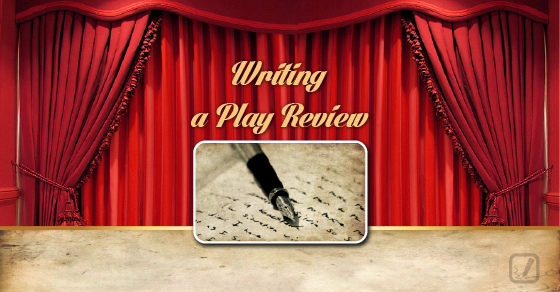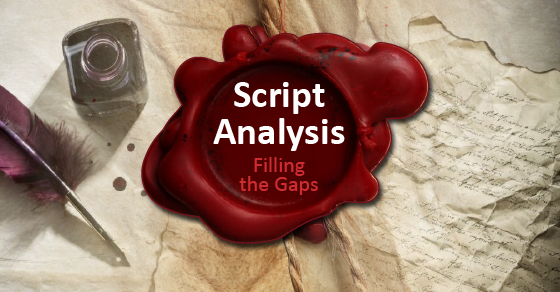Connect to Critical Thinking
Critical Thinking is a buzzword. It’s one of the keystone 21st century skills. How do we incorporate critical thinking into the drama classroom?
Provide steps not buzzwords
Critical thinking is a necessary skill. But it’s one thing to know this and another thing to to say to someone “You must be a critical thinker in order to survive the 21st century!” Students don’t need to know that. They don’t even need to hear the word.
Besides, the word critical is a little too close to criticize. If a student hears they’re supposed to be critical, it’s a short step from critical thinking to negative thinking. Critical thinking when properly applied, has little to do with being negative.
What do you do instead? Reframe the term and provide action steps.
What is a critical thinker? A critical thinker is specific. A critical thinker likes to learn about something they don’t know. A critical thinker has a point of view but can see value in the opinions of others. A critical thinker is able to draw conclusions. A critical thinker asks questions. A critical thinker challenges. A critical thinker reflects.
A critical thinker is engaged. And in my mind, that’s what we want for our students – we want engaged thinkers. That’s something you can say to your students: I want you to be an engaged thinker. Because a student who is engaged, is going to be specific, is going to reach out to learn new things, is going to work to draw conclusions, is going to ask questions, is going to reflect.
After you reframe the word, give your students steps to follow. What does an engaged thinker do?
- They ask questions
- They answer questions specifically
- They draw conclusions
- They have a point of view
- They are open to the opinions of others
How do I do this in the drama classroom? Start with one step at a time. Your class is preparing scenes in groups. During the post presentation discussion, have each student ask a question about the scene. That’s it. Get them in the habit of asking questions after every scene they present, after every play they watch, even after every new topic you present.
Questions alone will improve your students critical thinking skills.
Make your class a welcome space for students to give their point of view. Students hate being wrong and hate being laughed at. Because of that, giving their point of view on a topic or a scene could be terrifying. Maybe they’re reading a play like Waiting For Godot and they just don’t understand it.
Start at the beginning of the year by modeling not only what it’s like to give a point of view but to respect the point of view of others. Get your students in the habit of saying the words I respect your point of view. Get in the habit of saying that it’s okay if students don’t like a play you’re studying (if they can then go on to get specific about their dislike). One tip: Instead of saying I respect your point of view but.. get in the habit of saying I respect your point of view and… That “but” signals students that their point of view is probably wrong. The thing is that a point of view is never wrong. It’s what somebody believes.
Visualize and Dramatize the Concept
Today’s students are visual learners. They want to visualize concepts, not just hear them through instruction.
What do you do instead? Get your students to visualize and dramatize what it means to be an engaged thinker. It’s drama class, so get your students on their feet and involved in a theatrical way.
Discuss with students the opposite first. What is a trivial thinker? What are the characteristics of a trivial thinker? What do they look like? How do you see them? How do they sound? How do they move How do they approach class?
Get students up on their feet and embody the trivial thinker. Focus on the character aspects of this person: Their physicality, the volume and pitch of their voice. Come up with a name and three personal details for this person: Tammy Trivial (Or Tim Trivial) who slouches, has goldfish (because cats are too much trouble) and microwaves all her meals. She never questions anything, she doesn’t care about anything and she doesn’t like to learn. Have students embody this character, move about the room in character, and interact with each other in character.
Now have students pretend that Tammy Trivial is in their class. Ask for a group of volunteers to improvise a moment in which they are rehearsing a scene assignment. One of the students plays Tammy Trivial. Coach this student to “be” trivial and to dis-engage with the whole process.
Discuss afterwards what it’s like to work with Tammy Trivial and what someone like Tammy Trivial does to class work.
Once you’ve modelled someone who is dis-engaged, get students to visualized what an engaged thinker looks like. What does it mean to be an engaged thinker? How do you see them? What do they sound like? How do they move? What’s their name and what are three personal details: Eli Engaged (or Emmy Engaged) is always trying something new: he loves Ethiopian food, wants to visit the arctic and has tried stand-up, even though it didn’t go so well he wants to do it again.
Get students to physicalize and vocalize this type of person. Encourage them to embody this character, move about the room in character, and interact with each other in character. Coach them to ask each other questions, in character. To share their point of view on something. To receive that point of view respectfully. You are having your students try out the aspects of the engaged thinker through character.
At the end, prompt each student to ask a question about the exercise. Get into the habit of ending exercises with a question round. You may get a flurry of “Why did we have to do this?” And that’s ok. In this case, ask the question back, “Why might it be helpful to have a visualization of an engaged thinker?” Ask them to draw their own conclusion about the exercise. What inferences do they make based on the exercise?
Exercise
Students write a two person, one location scene between Tammy Trivial and Eli Engaged. They find themselves in a stuck elevator or maybe they’re on a first date, or they work side by side in two cubicles in an office. Remind students to keep the characteristics of each character in mind as they write. Focus on how each character moves, and sounds. Focus on how each character approaches situations – Would Eli ever be sarcastic with Tammy? Probably not. The point of the exercise is less about the scene itself and more about helping students solidify these two concepts (the dis-engaged thinker and the engaged thinker) as characters. It gives the concepts grounding.
Reflection
Students reflect on the exercise and explain what it means to be an engaged thinker in their own words. Reflect on how they approach classwork currently and how they can incorporate engaged thinking into their future work.



